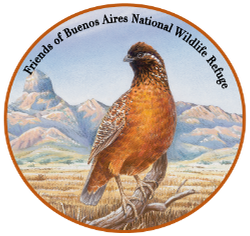Cormorants
by Walt Anderson
The featured wild neighbors this week are the two species of cormorants that occur in Arizona: Double-crested and Neotropic.
The Double-crested breeds in the interior of the US and along the coasts from Mexico to Alaska. The Neotropic barely gets into the United States except in Texas and New Mexico, but that is changing. Arizona recorded its first in 1961, when two carcasses of the species were found on a ranch near the border. A few individuals were spotted now & then in the southern part of the state, but in the 1990s, population expansion really took off, and they are now abundant in places in the Phoenix area and increasingly common in Prescott and Verde Valley. All of these shots were taken in Prescott (Willow and Watson Lakes) or Prescott Valley.
Even though the northern portion of its range barely gets into the US, the species is truly Neotropical, ranging all the way to Tierra del Fuego from sea-level lowlands to over 16,000 feet in the Andes.
The genus name, Phalacrocorax, translates as “Bald-headed Raven,” which is pretty insulting and reflects a common disdain for big blackish birds that sometimes compete with bald-headed fishermen (as does the Bald Eagle on occasion, but we give that species acclaim as the national bird!). As you will see, closer looks reveal gorgeous wing patterns, incredible emerald eyes, and dazzling cyan-purple iridescence in the plumage of adult birds. So let’s take a closer look . . .

The Double-crested Cormorant (top) is larger and bulkier than the Neotropic (below), with a comparatively shorter tail and broader dark margins on less pointed feathers on back and wing coverts.
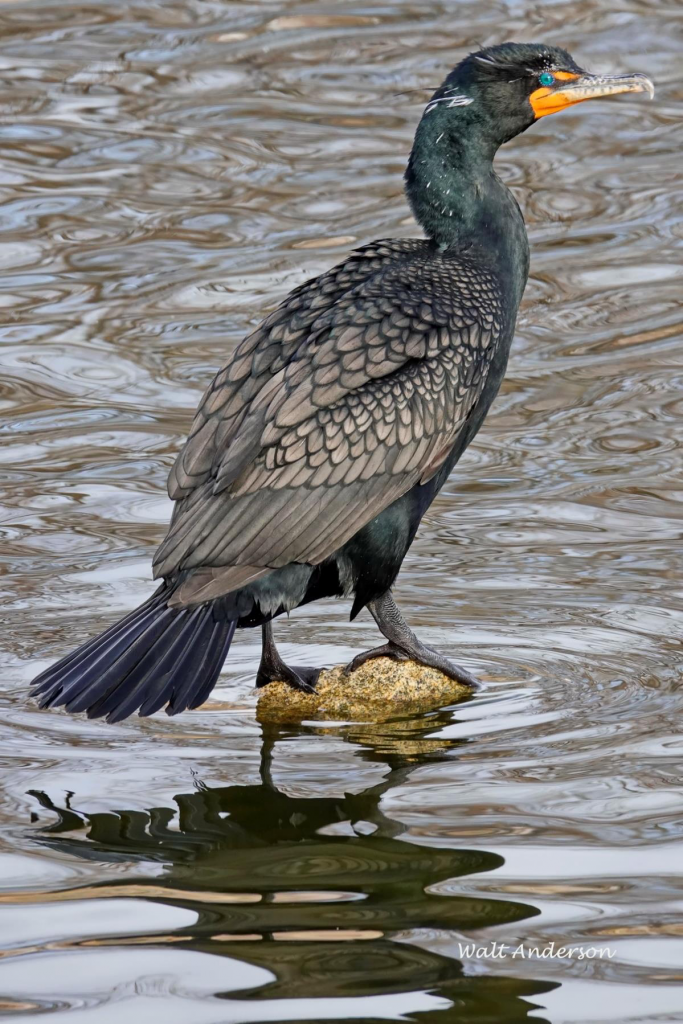
Notice those blunt, dark-edged back and wing-covert feathers on this handsome adult Double-crested. There is a larger, more rounded throat pouch and orange facial skin between eye and bill.
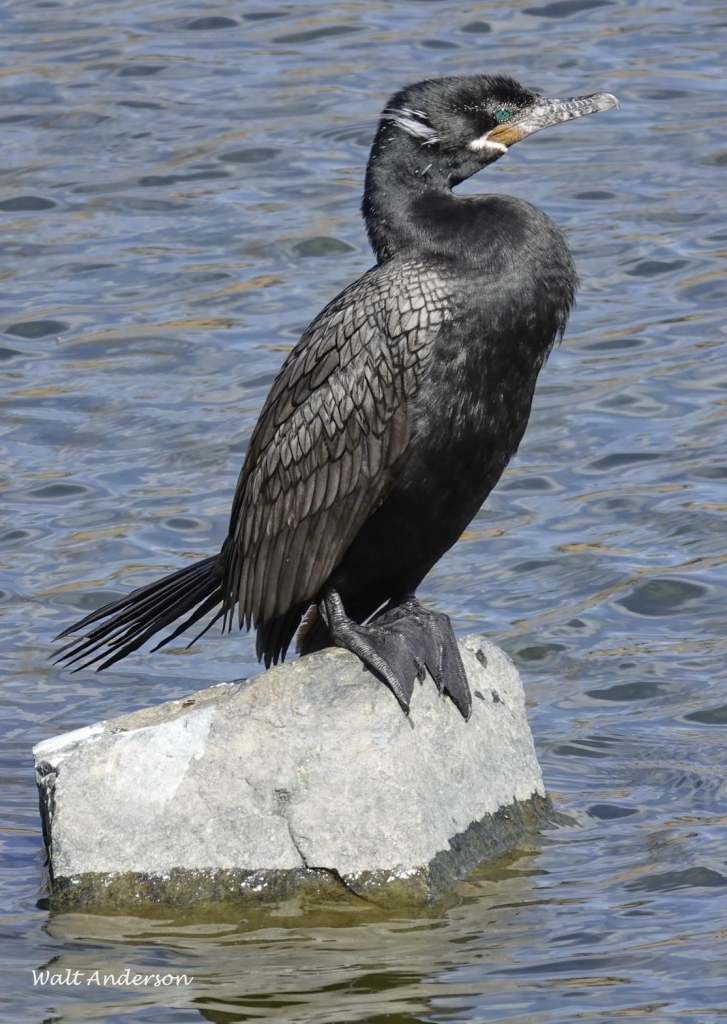
In contrast, the smaller Neotropic has more pointed upperside feathers with narrower dark margins. Its throat pouch is smaller and sharply pointed at the rear; the white margins often make that clear. There is no orange facial skin in the lores between the eye and bill.
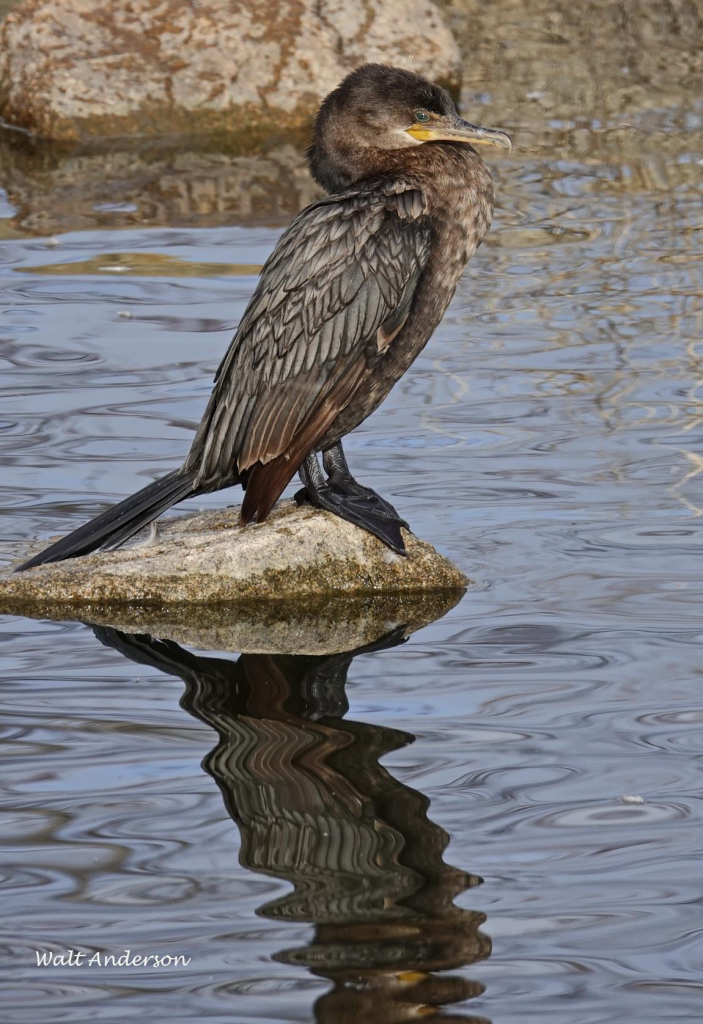
The immature Neotropic is much browner, almost bronzy in this case, but the acute angle at the back of the smaller pouch, as well as the long tail, gives it away. I just love this reflection.

The immature Double-crested shows the large throat pouch, more rounded at the rear, and orange lores. Also note the significantly shorter tail relative to that of the Neotropic. Throat and breast tend to be much lighter, as well. This bird is just beginning to get some of the handsome feathers of the adult.
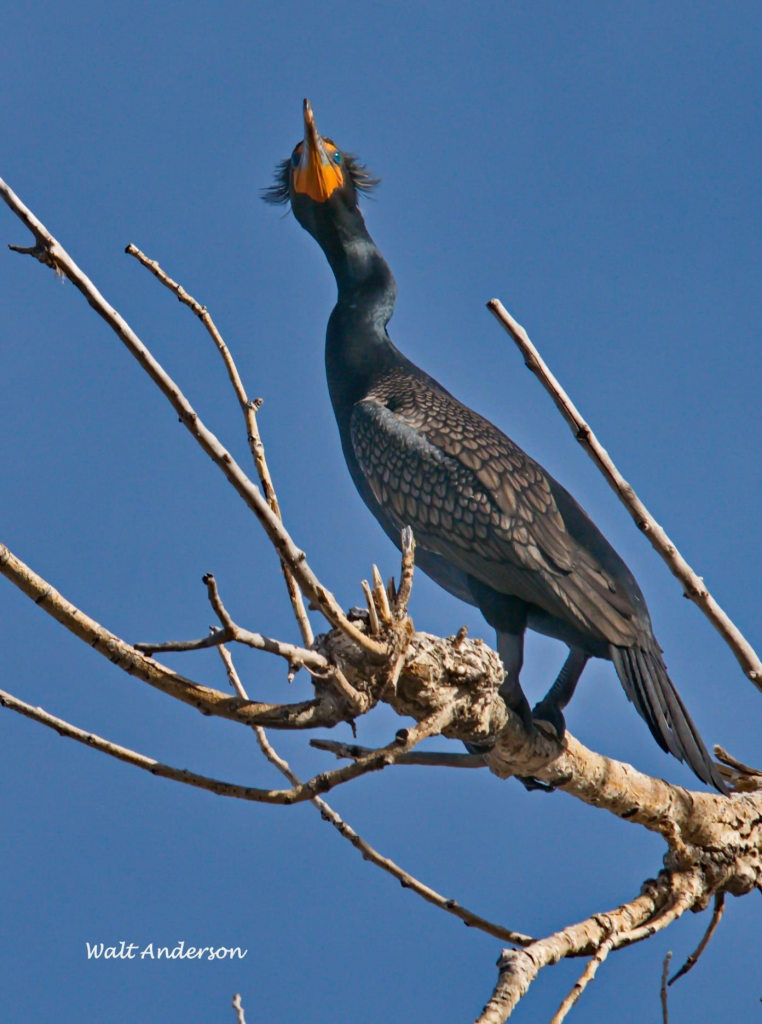
The double crests of this individual give it the mad-scientist look. Crests are individually and regionally variable and are present only during the breeding period when one has to look sharp to get a mate.
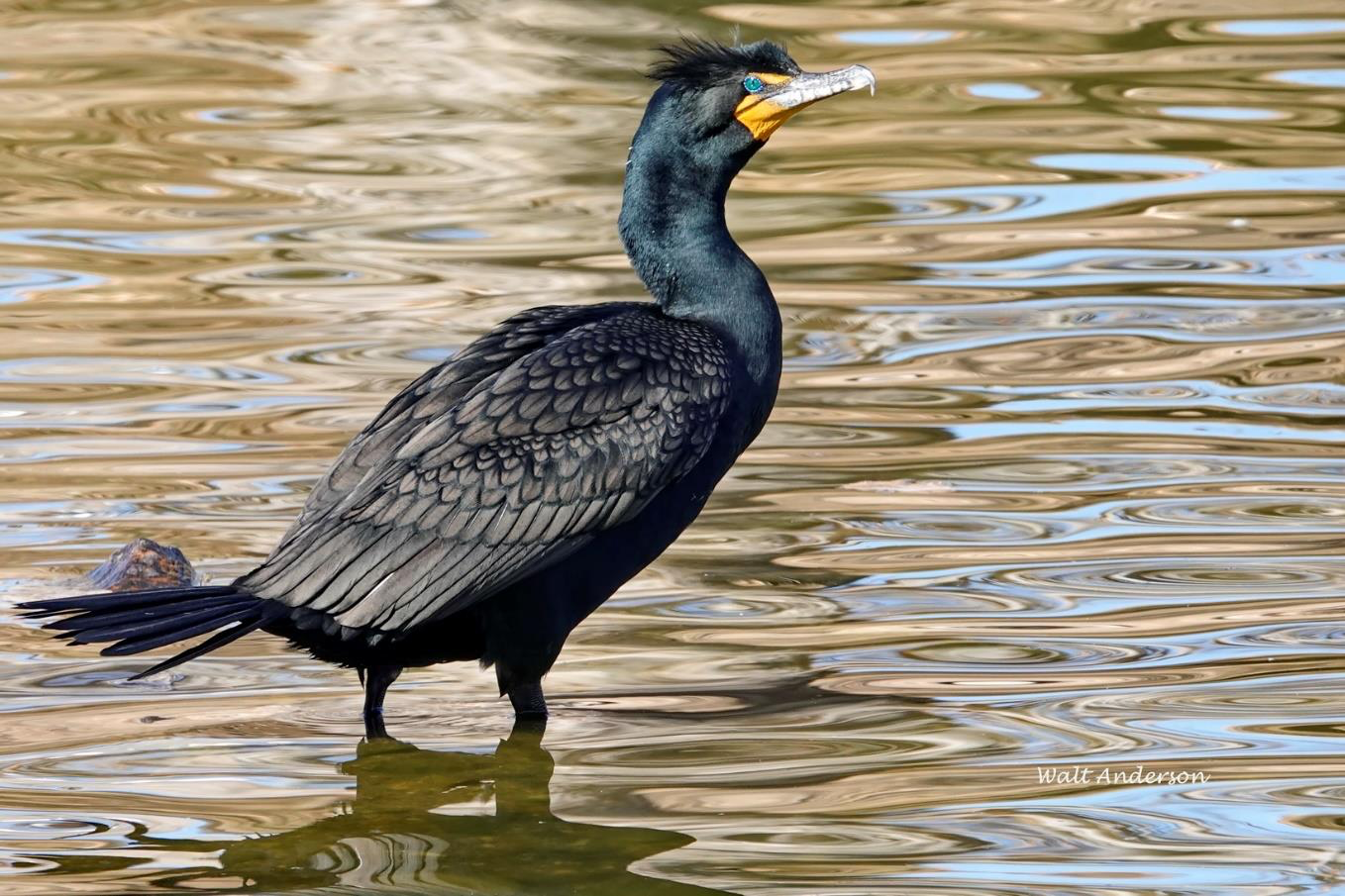
This handsome Double-crested sports a thick black crest.
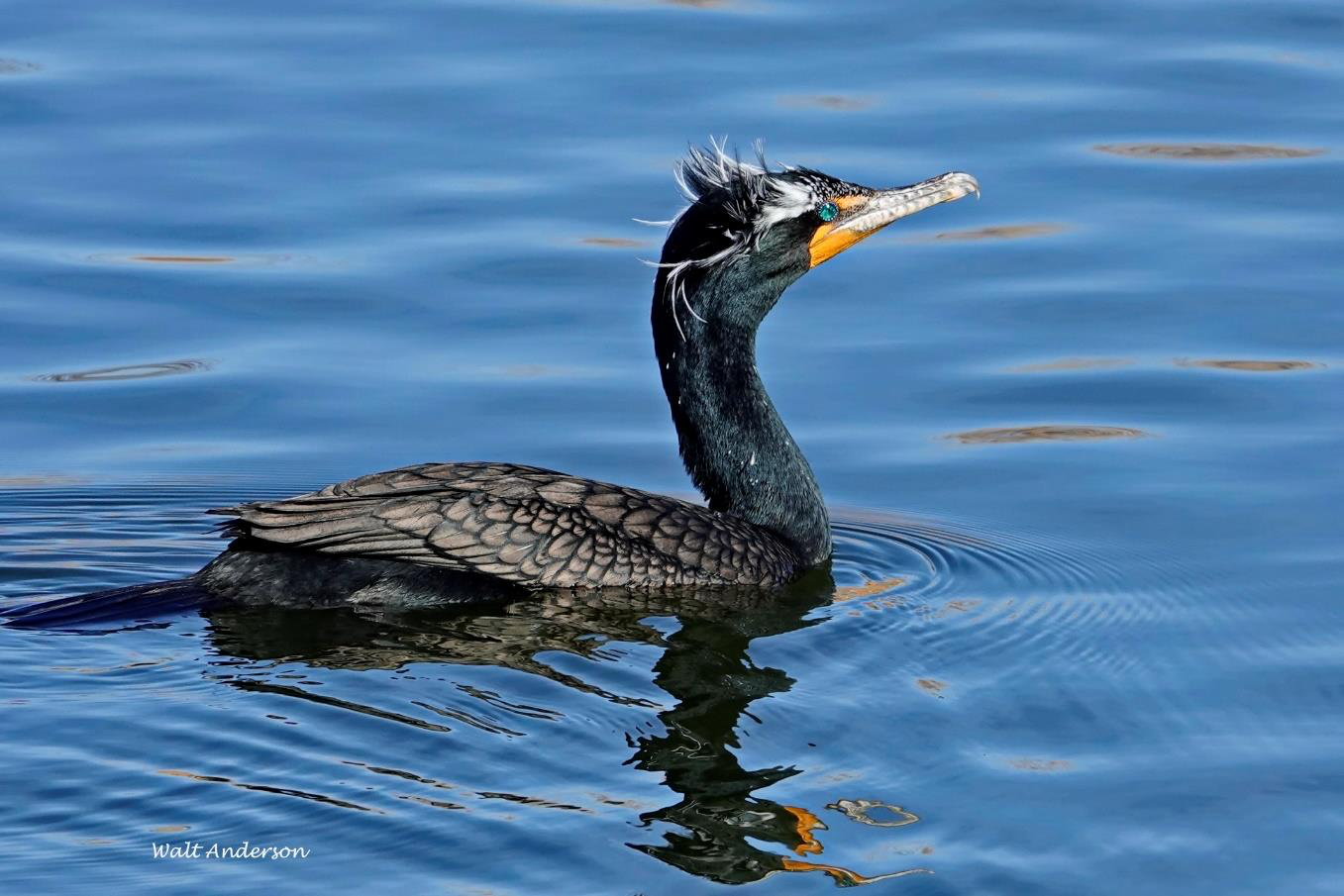
While this one goes for a touch of silver.

The silvery filoplumes of this Neotropic are placed farther back on the head. All cormorants have huge feet that are totipalmate; i.e., all four toes are joined by webbing. This increases surface area for powering dives in pursuit of swift fish. They also help the heavy bird get airborne—two-footed thrusts synchronized with the wing flaps. In contrast, most waterbirds (e.g., geese and swans) thrust alternately with their palmate feet as if running during take-off.
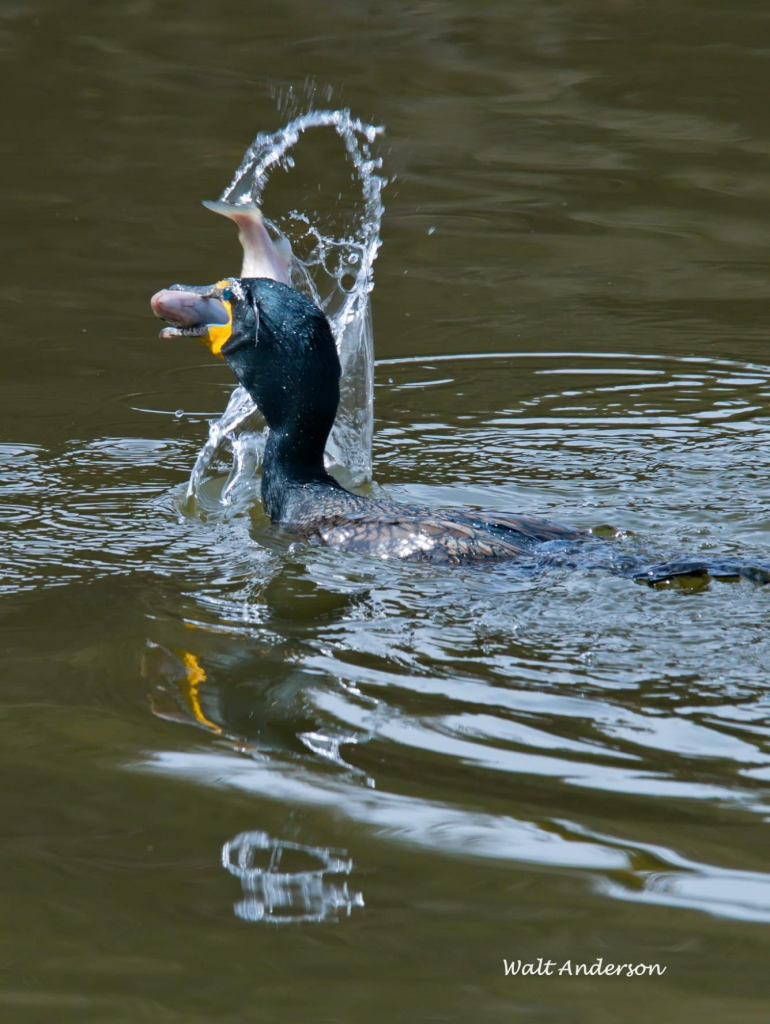
Cormorants are efficient fishermen, quickly coming up with a succulent trout, much to the envy (and sometimes anger) of the nearby human attached to a pole with a silly lure on the end. Why wait for a fish to come to you when you can go directly to the source and pick your own? It’s clear who wins the piscine contest!
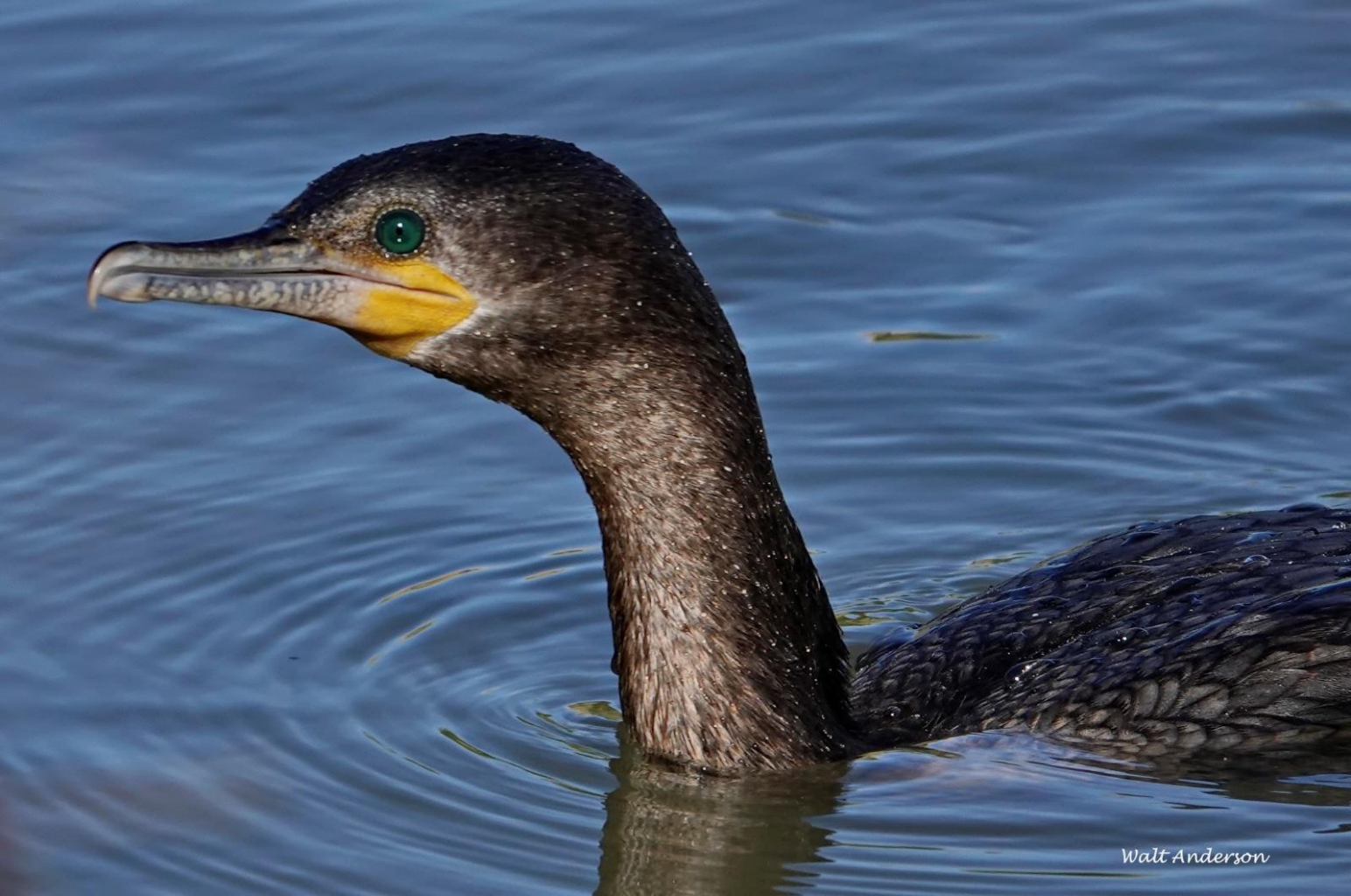
That sharp hook at the tip of the beak is great for snagging a slippery fish. Cormorants can open their gapes widely when swallowing large prey items. In various parts of the world (e.g., Japan, China, Greece, Macedonia), humans used trained cormorants to capture fish for them. The birds were allowed to eat the smaller fish they caught, but the larger ones were prevented by neck rings from getting down the throat and were collected by the fishermen. With current fishing technologies (mostly unsustainable), a few Japanese now demonstrate cormorant fishing as a tourist attraction.
Notice the turquoise eye that resembles a ring setting in a jewelry store.
That orange gular pouch is somewhat expandable (think of how a pelican can expand its capacious pouch), and it is fluttered to help dissipate heat by evaporative cooling when it gets too hot.
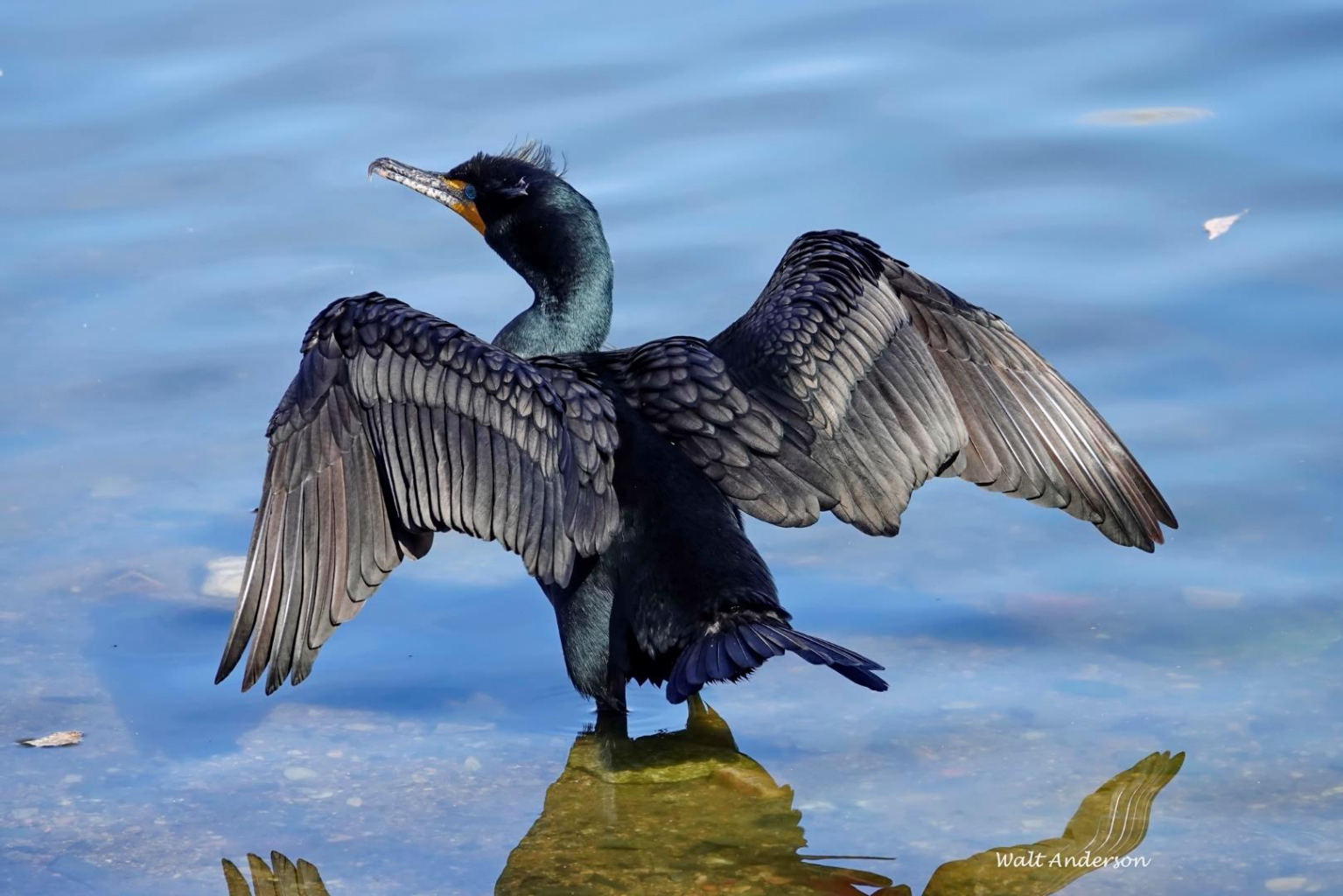
After a fishing session, a cormorant typically spreads its wetted wings to dry. This gives you a chance to count its flight feathers: 10 primaries, 19-20 secondaries, and 12 rectrices (tail feathers).
Because cormorants are so efficient at catching prey, they spend much of the day preening and simply loafing, usually in the company of other cormorants. We have plenty of human analogues at local coffee shops.
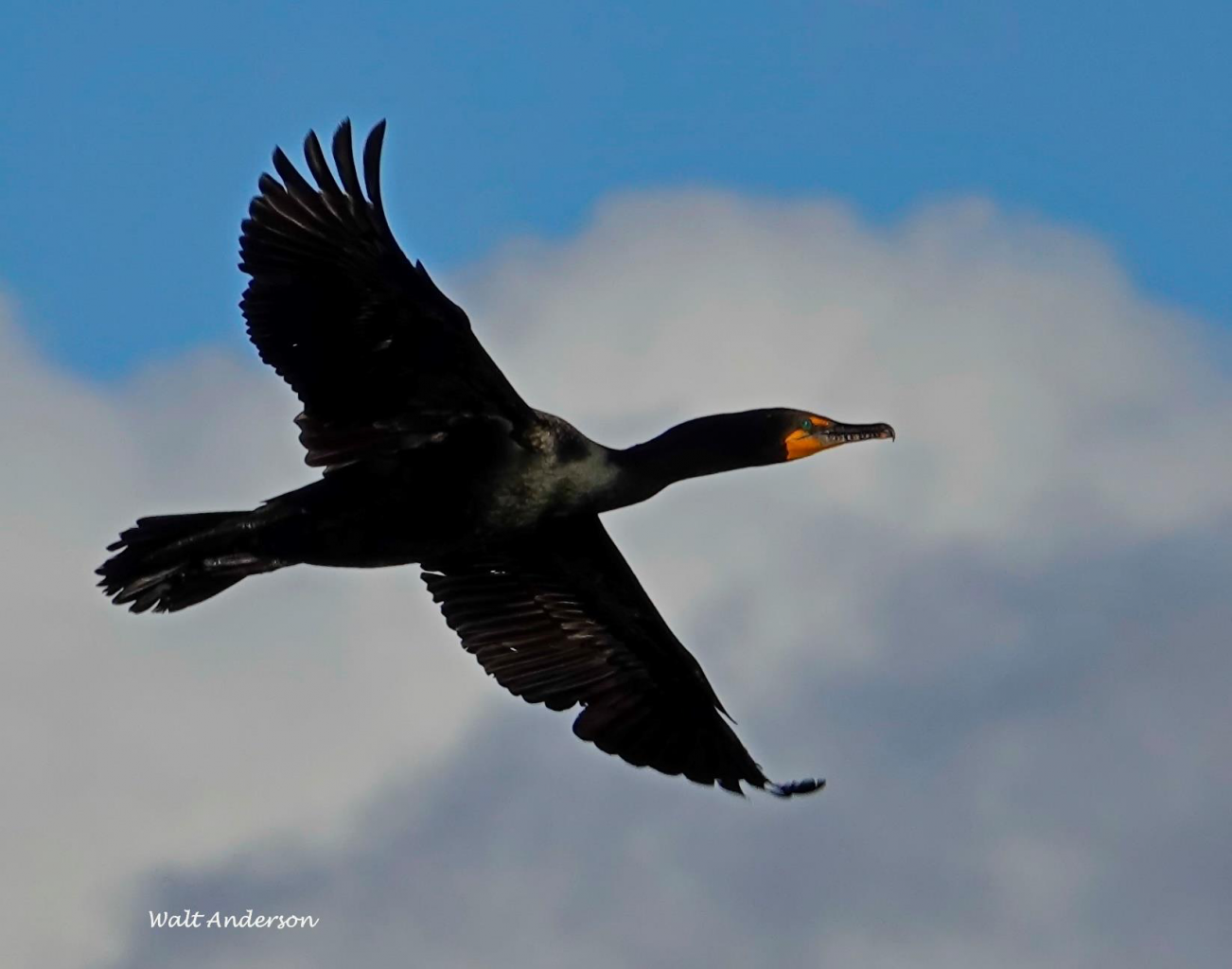
Cormorants are built more for diving than flying, so it takes effort to get aloft. On the water, they usually head into the wind for better lift, and their big, webbed feet help power the take-off. When they take flight from a tree, they usually lose some altitude before stabilizing. They flap pretty consistently, rarely gliding except when landing. As they land, they spread wings, feet, and tail and again head into the wind to help slow them down. Surprisingly, they are maneuverable enough to land in trees and even on wires.
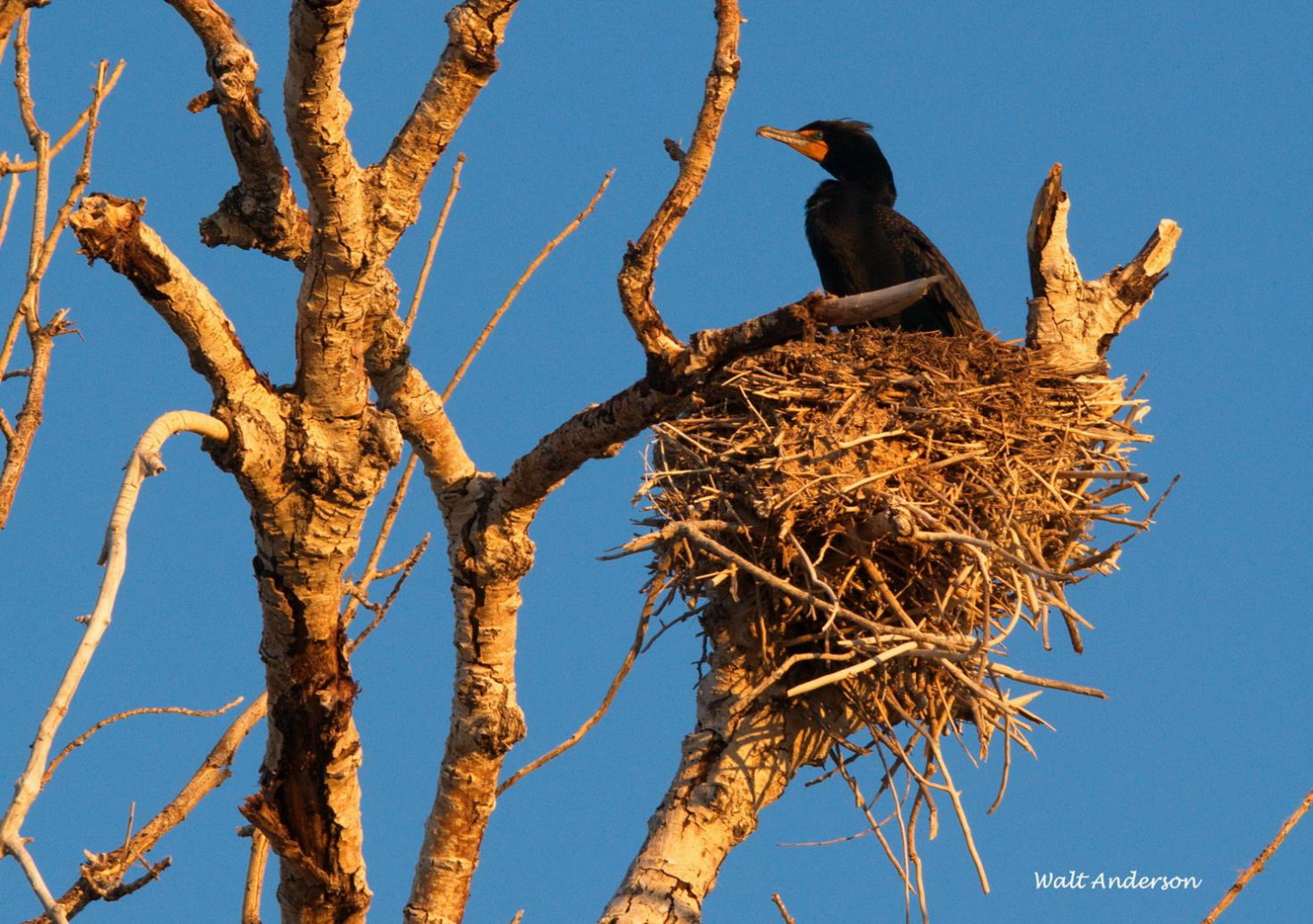
During nesting, the male brings material to the female, who constructs the large stick nest. Cormorants are often attracted to the nesting colonies of herons and other wading birds. Their excrement is extremely high in nitrogen and phosphorus, which ultimately can kill the nesting trees. Accumulations of guano (up to 200 feet thick!) on islands in Peru where cormorants have bred for centuries was harvested unsustainably as “brown gold” for use in fertilizers and explosives. Those guano stocks are diminishing because fishing has reduced anchovy populations so much that cormorant populations have declined in tandem.
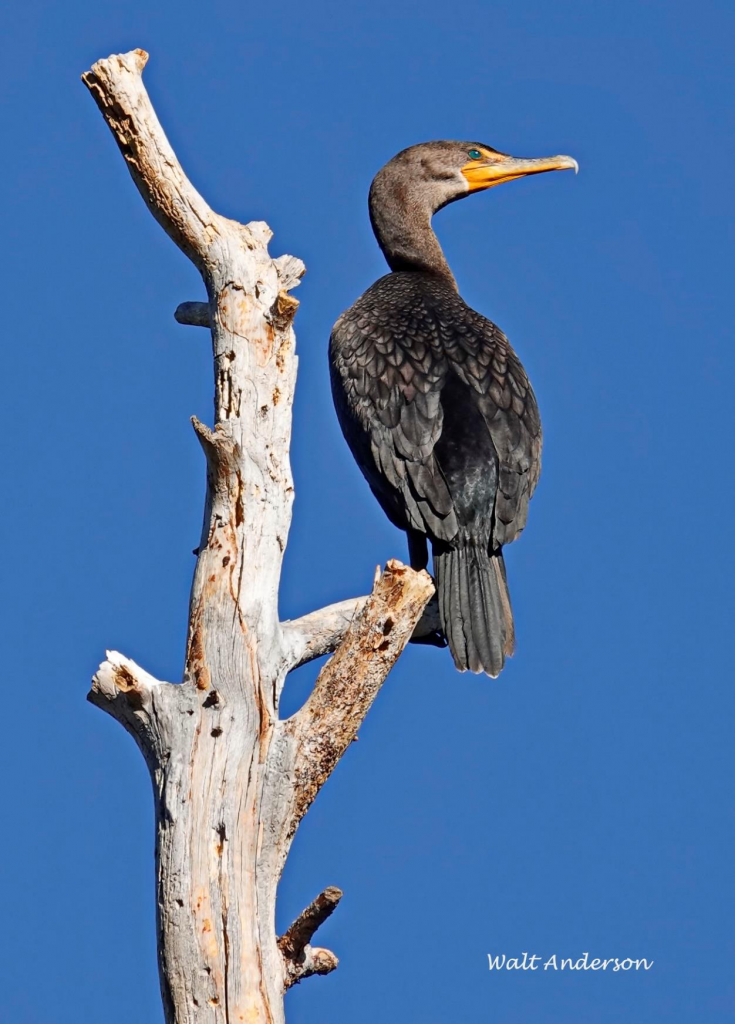
The creation of reservoirs (almost every “lake” in Arizona is one) and stocking of game fish have greatly improved habitat for cormorants in the state. Only after the City of Prescott purchased water rights to Watson and Willow Lakes, thereby creating year-round water, were cormorants able to breed in this area, notably at Willow Lake at the Cottonwood Peninsula.
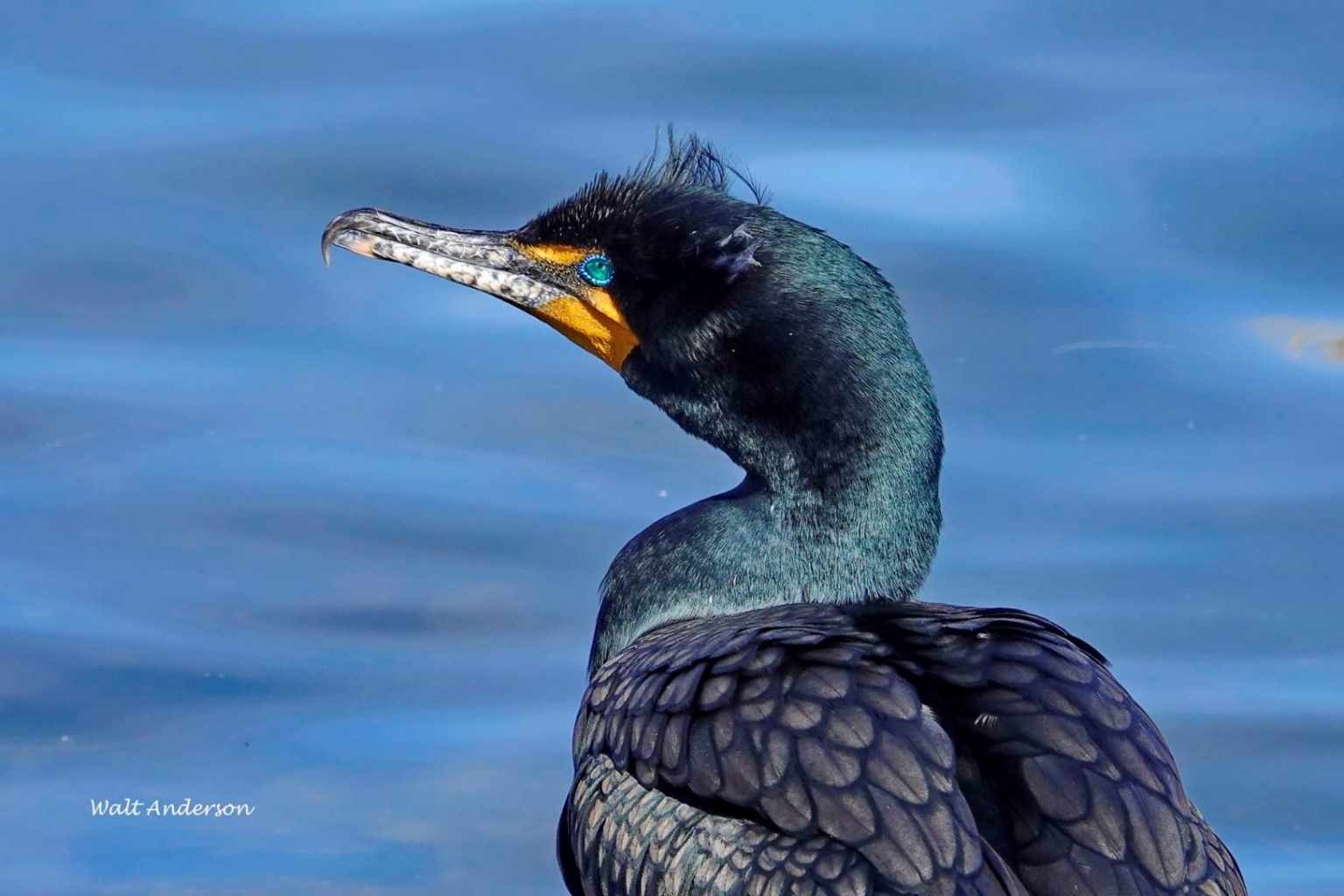
During the 19 th Century, cormorants were harvested (the usual euphemism for slaughtered) at high rates, as were many other birds and mammals (e.g., bison) until conservation measures were started in the early 20 th Century. Then in the 1960s and 1970s, heavy pesticide use caused eggshell thinning and reproductive failure like what happened to the Peregrine Falcon and other members at the top of food webs. Finally pesticide use was banned, and the birds began to recover.
Now because of the increased populations in parts of the US, cormorants are persecuted for the alleged impacts on fish populations. Some of the killing is illegal, but some is government-approved and sanctioned. Humans have created conditions that have favored certain species that are perceived as “pests.” Think gulls at garbage dumps and Canada Geese at golf courses.
At the same time, many other species have suffered from loss of habitat, impacts of introduced species, predation by cats, collisions with windows and vehicles, mining and fracking, and all sorts of human-induced mortalities.
Wildlife management today is mostly about human management. It also requires an enlightened and caring electorate, which is why I go to the effort of writing Wild Wednesdays. If I can change a few hearts and minds to better understand and truly care about our wild neighbors, then perhaps I can justify some of my own environmental impacts that come from simply being human.
